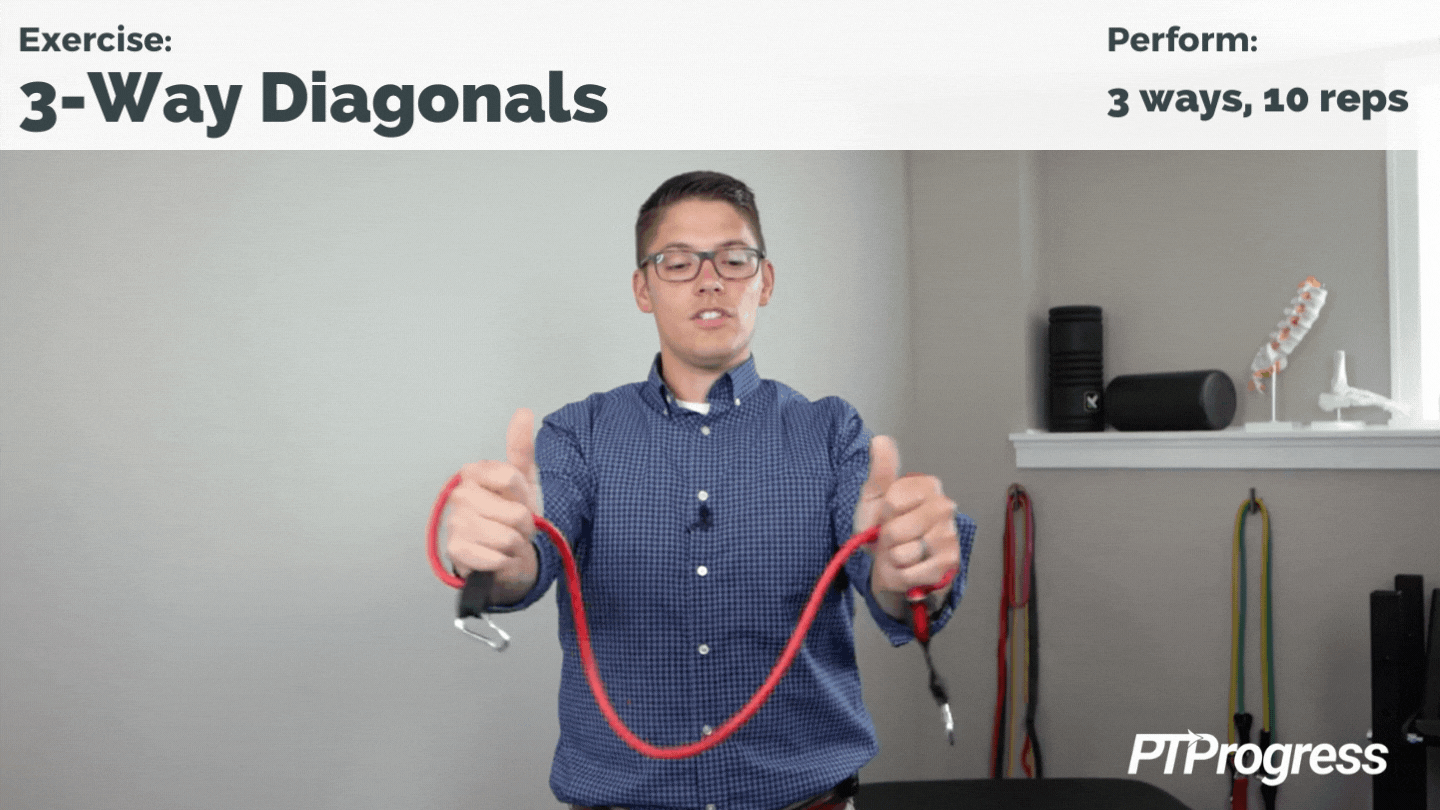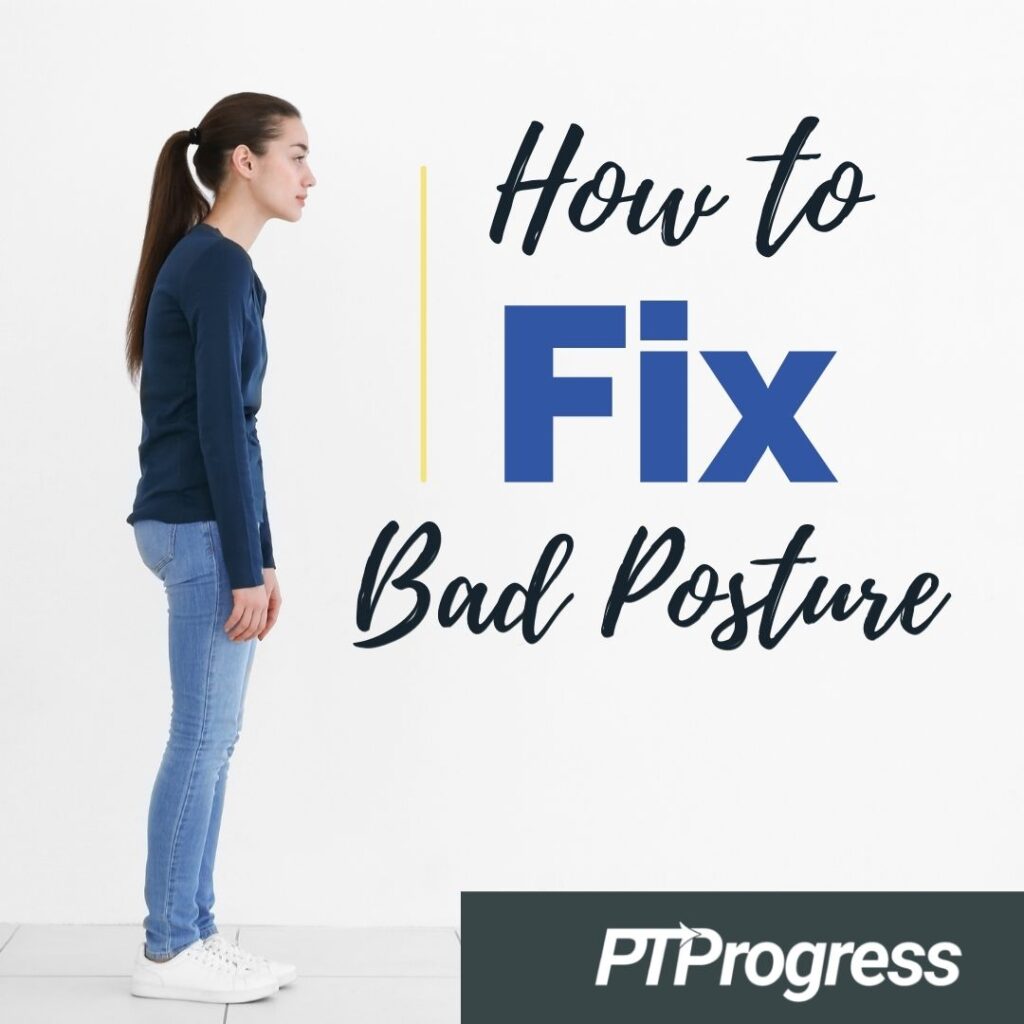You don’t need to follow a fad diet or gimmicky YouTube ad to look younger, reduce back pain, avoid injury, and improve your mobility. You just have to fix bad posture!
What does it mean to have bad posture?—you may wonder. Isn’t that subjective? Well, not really. You can hold yourself any way you like, but you’ll feel strongest, most stable, and most centered when your body is aligned in its ideal posture.
Assessing Your Posture
Good posture looks like a straight line, or what we call “neutral spine”: ears over shoulders, shoulders over hips, and hips over ankles. Instead of slumping forward, a body with good posture forms one long line from the top of the head to the heels.
Maybe you don’t think your posture is all that bad. Stand normally and consider:
- Are your shoulders rounded?
- Does your head jut or sink forward?
- Do your thumbs point inward towards each other as they hang by your sides?
Another way to assess posture is to consider its effect on your everyday life:
- Do you have neck pain, especially after sitting at the computer for an extended period of time (what we call “tech neck”)?
- Do you end the day with tough knots around your shoulder blades?
- Do you have a dowager’s hump (a buildup of fatty tissue at the base of your neck that makes you a little hunchbacked).
If you said “yes” to most of these—even half of them—I hate to break it to you. But your posture could use some work.
The Effects of Poor Posture
Why do things like neck pain, shoulder knots, and a dowager’s hump indicate chronic poor posture? Because the way you carry yourself affects your muscles: shortening (flexing) some and lengthening (extending) others.
For instance, your pectoral muscles shorten whenever you round your shoulders. The longer they stay flexed, the tighter they become, making it harder for you to maintain good posture comfortably.
Poor posture also affects your coordination. When muscles are tight or overextended, they may recruit “help” from larger muscles nearby to complete a specific task.
For example, the small muscles in your neck are responsible for keeping your head in line with your shoulders. But when they are weak and overextended, the larger neck muscles may take over, get overworked, and develop knots—giving you tech neck.
Sustain poor posture for too long, and you risk straining yourself with everyday tasks, such as reaching high overhead or lifting a heavy object. You might even develop a neck hump, a fatty deposit needed to protect the spine in forward head posture.
How to Improve Your Posture
It may be insidious and near ubiquitous, but poor posture is not irreversible. As a Physical Therapist, I help people relearn how to carry themselves, coordinate their muscles, and strengthen their body to avoid pain and injury.
I’ve put together a routine of mobility drills, stretches, and exercises you can do every day to improve your posture. You don’t need to be young, in shape, or particularly flexible to perform any of these moves, and they’re easy enough to do at home with minimal equipment.
When it comes to improving your posture, repetition is the key to results. So double your efforts and try to perform this routine often—ideally, twice a day.
Here’s how to fix bad posture:
Part 1: Mobilize
- Wall slides: 20 reps
- Thoracic extension: 15 reps
- Pectoral ball press: 30-second hold
Part 2: Stretch
- Prone position: 30-second hold
- Pec Doorway Stretch: 20-second hold, 5 reps
- Neck stretches: 30-second hold, 4 reps
Part 3: Strengthen
- Scapular retraction: 20 reps
- Chin Tucks: 20 reps
- IYTL: 15 reps
- 3-way Banded Diagonals: 10 reps
Before jumping in, remember: stretching should never be painful. Go slowly and gradually so you can listen to your body, and back off or completely stop what you’re doing if you feel pain.
Part 1: Mobilize
In this first part of the routine, your goal is to loosen up the tight, rigid knots in your back, neck, and shoulders. Be gentle. You’re looking to increase mobility, not pain, so back off if it becomes uncomfortable or painful.
1. Wall Slide
The simple motion of sliding your hands up and down a wall can help both your thoracic mobility and the upward rotation of your scapula. It’s a great move to start with, because all you need is a blank wall.
Face the wall and place the pinky side of your hands against it at about shoulder height. Slide your hands up the wall as high as you can go before slowly sliding them back down. This might feel easy at first, but after 20 reps, you’ll begin to feel it in your shoulders.
A reverse wall slide works the same way, but as a bonus it helps open up your chest. Turn around so that, when you raise your arms into a goal-post position, your thumbs gently graze the wall. From here, slide your hands up the wall, working to maintain contact with it throughout the movement. If this is uncomfortable for your head, use a towel or small pillow as a buffer.
Either version can be made more challenging by stretching a resistance band up the wall as you slide. But for right now, focus on loosening up your muscles with more mobility drills.
2. Thoracic Mobility Drill with Foam Roller
Lie down on a flat surface and place a foam roller horizontally under your back, near your shoulder blades. You can also use a large, rolled-up towel if you don’t have a foam roller.
With your arms crossed in front of you, lean backwards around the foam roller in a gentle backbend. As comfort allows, gradually extend your stretch by clasping your hands behind your head and moving the foam roller up and down your back.
Aim for at least 10–15 extensions over the foam roller.
3. Pectoral Ball Press
Typically, poor posture means rounded shoulders, and rounded shoulders mean tight pectoral muscles. To help loosen them up, find a tennis ball and a wall. Lean against the wall, with the tennis ball nestled between your chest and armpit, and massage your tight pecs.
You can hold this for 30 seconds or add some movement by raising your arm overhead and back down as you press into the ball. Repeat the movement 15 times, then switch to the other side.
Part 2: Stretch
We all know it’s important to stretch, but how many of us actually set aside time each day to do it? Now that your muscles are warmed up, take the opportunity to lengthen them through careful, slow stretching.
1. Prone Position
Lying “prone” means lying on your stomach, a chance opportunity to undo all the day’s slouching. As you lie prone, prop yourself up onto your elbows and extend your upper spine.
For proper form, make sure your elbows are directly beneath your shoulders. Aim for a slight arch in your lower back and imagine you’re peeling yourself off the floor. Hold the prone stretch for at least 30 seconds.
From here, you can intensify the stretch by extending your arms straight and lifting your chest higher. Or, make it a press-up exercise by switching from bent elbows to straight elbows, 10 times.
2. Doorway Stretch
Because it works both sides of your chest at once, the doorway stretch is perfect for reversing a few hours’ worth of rounded shoulders and slumped desk work.
Stand in a doorway in a split stance, with one foot forward and one back. Place your elbows on the doorframe at shoulder height and hold them steady as you lean forward onto your front foot. Hold the stretch for 15–20 seconds before releasing. You can repeat this up to 5 times.
2. SCM Neck stretch
It’s easy to overlook stretching the neck, but tight neck muscles can contribute to all kinds of neck pain, back pain, and tension headaches. This move works on the sternocleidomastoid, but we call it the SCM stretch for short.
First, sit up tall on a chair. To work on your right side, you’ll need to stabilize your left shoulder, which you can do by placing your right hand on your left collarbone. Next, slowly tilt your head to the right and turn to look up at the ceiling. Once you feel a gentle stretch, hold it for 20–30 seconds at a time, repeating up to 4 times on each side.
Part 3: Strengthen
Only after you’ve mobilized and stretched your body should you attempt to exercise it. To get the most out of these moves, aim for the recommended reps and do more than one set, if you can tolerate it.
1. Scapular retraction
It’s hard to underplay the benefits of performing scapular retraction throughout your day. This simple shoulder squeeze is about as versatile as it is essential to improving posture.
Either sitting or standing tall, draw your shoulders down and back so that they lie flat on your back, almost touching. Release the squeeze and then repeat, up to 20 times at once.
Be careful not to hike up your shoulders as you do this move. That will only recruit your upper trapezius muscles instead of the finer scapular ones you want to pinpoint.
When you’re ready to challenge yourself, grab a resistance band. Hold each end in front of you with your elbows bent. Next, squeeze your shoulders together and pull the band taut as you rotate your arms outward, keeping your elbows glued to your waist. Repeat 20 times for each set.
2. Chin Tuck
Chin tucks provide a subtle way to both stretch and strengthen the intrinsic neck muscles that support your head.
Stand or sit tall on a chair, with your back straight and shoulders square. Next, gently tuck your chin down towards your chest so that you have a double chin.
You should feel a slight stretch along the back of your neck, which you can intensify by pressing your chin down with your finger. From here, release your chin back to neutral and repeat the motion up to 20 times.
3. I, Y, T, L
Not an acronym, IYTL denotes the shape your arms make as you perform this exercise.
While standing against a wall, raise your arms overhead to make the “I,” then return to neutral. Raise and separate them for the “Y” and form a “T” by stretching your arms out level with your shoulders. Finally, make two “Ls”—one backward—by bending your elbows, hugging them to your waist, and rotating your arms outward like a door hinge.
Remember to bring your arms back to neutral between each letter and make sure your shoulders stay down and back—in diligent scapular retraction—throughout the sequence. Repeat 15 times.
4. Banded Diagonals
You may not have resistance bands, but they’re really worth the small investment and minimal storage space. With a light band, you can finish off your routine with one of my favorite exercises—three-way banded diagonals.

Squaring your shoulders, hold one end of the band in each hand as you stretch it in three directions: straight across your chest and diagonally at a 30º angle, both ways.
Cycle through each direction for one sequence, repeating 10 times.
Accessories to Fix Bad Posture
Although you don’t need much equipment to fix bad posture, a few tools can’t hurt.
Besides a foam roller and a set of resistance bands, below are two more items you may consider adding to your arsenal.
A massage gun is a handheld massager perfect for treating tight and achy muscles at home. You can use it to help mobilize a tough knot or cool down after you exercise. (Check out this post to learn more about these nifty gadgets.)
I’m not for gimmicks, and a posture corrector brace isn’t one—as long as you don’t expect it to fix your posture all on its own. I found that a well-fitted posture brace can serve as an effective reminder to keep your shoulders back while standing and sitting.
For more tips on improving posture—day and night—check out the rest of the blog!


